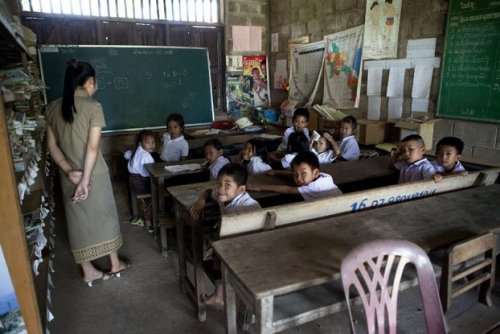Govt Struggles To Make Timely Salary Payments
The government is still facing a number of challenges in making sure state workers get their monthly pay packets on time, even after cutting the living allowance.
The government stopped paying state employees the monthly 760,000 kip (US$95) living allowance on October 1 last year in a bid to accrue 2,000 billion kip (US$250 million) this fiscal year as part of efforts to maintain macro-economic stability.
Some civil servants still have not received their February salary, which makes life hard for those who are dependent on their monthly wage.
According to a report from the World Bank, the government’s overall spending will remain high despite the cut in benefits paid to civil servants. However, the cut is almost fully offset by a substantial rise in the wage index of about 40 percent.
The government raised the state employee salary index from 4,800 kip per unit to 6,700 kip on October 1 last year and plans to increase wages further in coming fiscal years.
The recruitment of new civil servants last fiscal year will also keep the government’s salary expenditure high, notes an article in the Lao PDR Economic Monitor titled ‘Managing Risk for Macro Economic Stability’.
The report also says that wages and benefits for civil servants will remain at 39.8 percent of the government’s total expenditure, a slight increase from 38.1 percent last fiscal year.
The government recently gained approval from the National Assembly to spend 29,745 billion kip (US$3.7 billion) this fiscal year while anticipating collecting only 25,261 billion kip (US$3.1 billion) in revenue, according to a report from the Ministry of Planning and Investment.
The World Bank report says one of the major challenges the government will face in collecting revenue and securing sufficient funds for expenditure this fiscal year is that the resource sector is expected to generate less revenue due to lower gold production and the declining price of mining products.
“Mining revenue contribution remains uncertain due to protected lower commodity prices and expected lower total gold production in the 2013-2014 fiscal year despite copper output increase in the same period,” the report says.
The report also says the government needs to increase revenue generated by the non resource sector to secure enough funding to meet expenditure targets.
“Achieving the needed 20 percent increase in nominal revenues in the non resource sector will be a significant challenge even as the revenue base expands with nominal GDP by about 11 percent over the year,” the report reads.
Source: Vientiane Times

